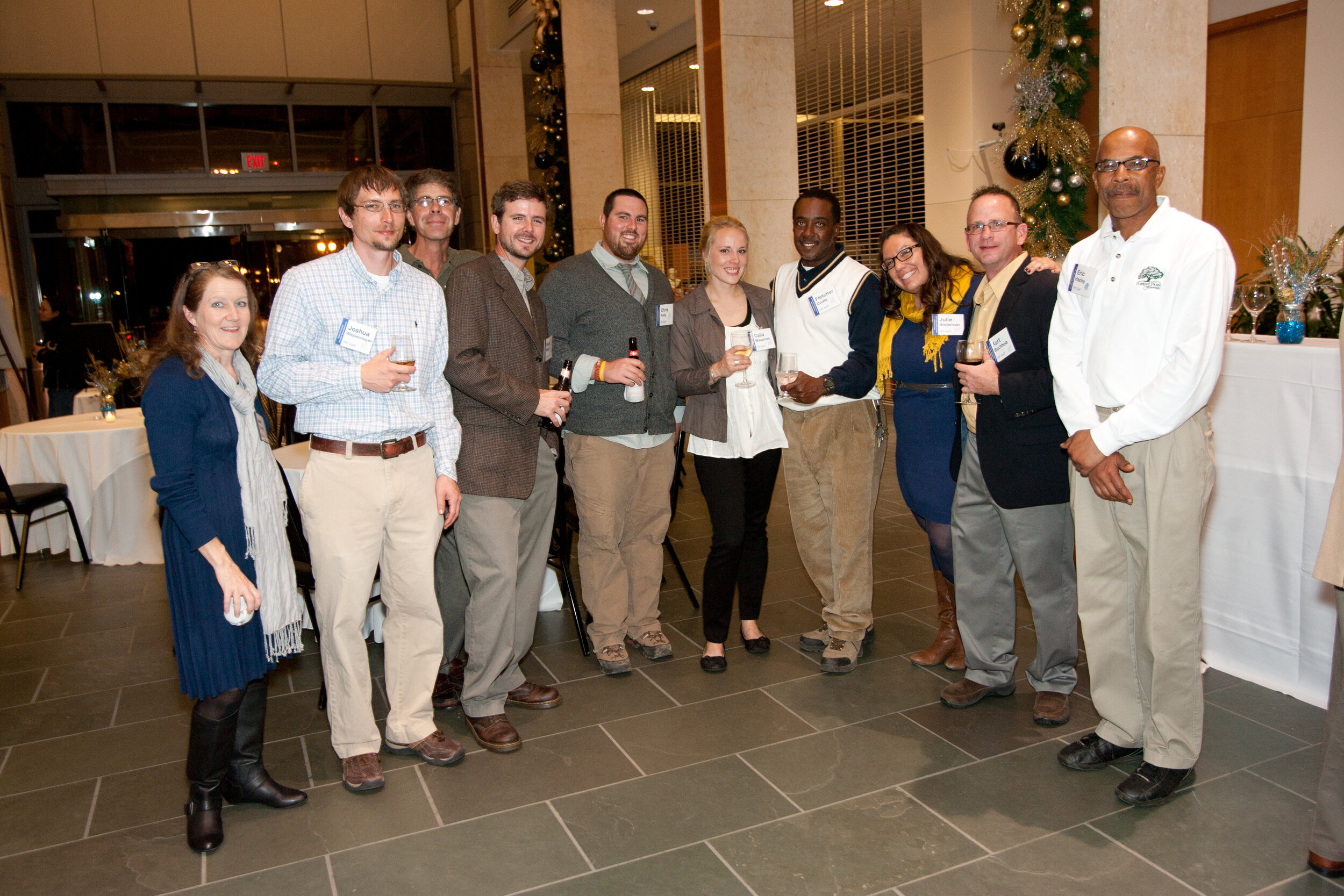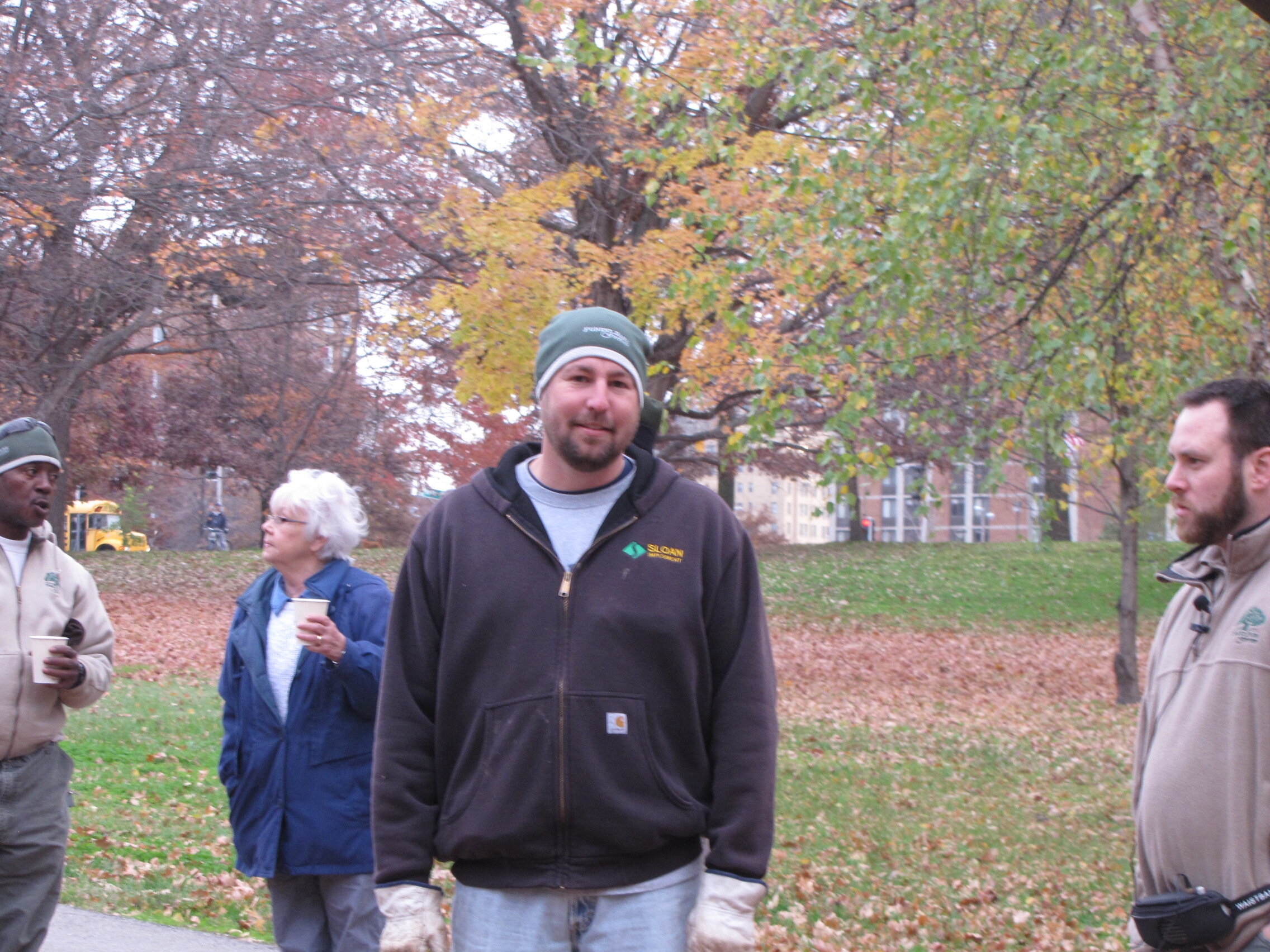Partnership, Professionalism and Passion: Our Land Management Department Turns 15
The Birth of a Vision
BILL REININGER
In June 2005, Forest Park Forever’s new park operations manager, Bill Reininger, accepted a challenge that would change the trajectory of our organization.
Then-President and Executive Director Jim Mann asked Reininger to determine if Forest Park Forever could manage Park maintenance on its own, rather than using its longtime outside contractor.
“By the fall, I had put together a business plan, which showed that with volunteers and a few more staff people, we could not only do a good job, but do that job over a larger area,” recalls Reininger, who became Director of Tower Grove Park in 2015 after a decade with Forest Park Forever. “The Land Management team was born as soon as Forest Park Forever accepted the plan.”
Over the next 15 years, Land Management’s service to the Park would grow from maintaining four zones and the Nature Reserve areas, in partnership with the City, to conserving and improving eight zones, an increase in acreage from 100 to more than 600.
The staff would grow as well. With the business plan in place, Reininger hired Alan Jankowski as the new division’s first horticulture foreman. By 2006, Land Management had four employees.
Today, the team is more than 25 people strong, including professional horticulturalists, gardeners, Nature Reserve technicians, riparian and Nature Reserve stewards, and a park ecologist. These staff members are supported by hands-on volunteers as well, though the pandemic has meant making adjustments in that area. Land Management is now a robust force of passionate, professional people committed to designing and maintaining landscape beds, caring for trees, and preserving and restoring the Park for millions of visitors from our region and around the world.
The Promise of Partnership
Of course, Reininger is the first to say that he did not create Land Management alone.
“All the work in those early years resulted from generous donors and our 2007 maintenance agreement with the City of St. Louis Parks Division,” he explains. “Donors allowed us to add staff, create new zones and expand existing zones, while our maintenance agreement empowered Forest Park Forever staff and City employees to do what each does best to keep the Park looking its best.”
According to the maintenance agreement, City employees perform many large municipal services such as cutting grass, removing trash, plowing the roads and caring for trees above a certain height. Forest Park Forever staff plant flowers, install and care for the landscape beds and ornamental trees, conserve the Nature Reserve and the waterway, and maintain the sight lines and other design elements of the Park’s 1995 Master Plan.
SHAWNELL FABER
“The great lines of communication the maintenance agreement established with the City allows Land Management’s professional staff to work collaboratively with the Park Division’s highly skilled employees,” says Shawnell Faber, who joined Forest Park Forever as Director of Land Management in 2016 after 16 years as park manager for the City of Webster Groves. “The agreement laid out expectations, formalized relationships, and gave clarity to processes that continue to this day.”
The Power of Professionalism
The maintenance agreement also allowed Land Management’s level of professionalism to flourish, ensuring consistency in park management over the past 15 years.
“Under our trained staff’s guidance, best practices, and documented standards of care, Forest Park Forever’s volunteers, interns, Nature Works participants, and others keep the Park looking the way it was designed to look,” Faber says. “We even created a handbook for our horticulturist, gardeners, interns, and seasonal gardeners to follow, which ensures they can maintain our high standards even as staff members change.”
For example, when new zone managers join Forest Park Forever, they use the Forest Park Forever standards of care document to review the original design intent and make sure the vision under the Master Plan stays intact.
Forest Park Forever’s horticulturists also use a planned designed community approach in several areas, which assimilates design into the ecological zones, and ecological practices into horticulture designs. And today, Forest Park Forever no longer contracts its tree-planting initiatives, because a designated Land Management planting team that is trained, certified, and skilled in tree care now does that work.
“Our Land Management experts allow us to select plants with an eye to both ecology and design,” Faber says. “That way, we can create an environment that reflects a natural system and balances beauty and function within the Park’s very urban context.”
Similarly, to make sure large capital projects get off on the right foot, Land Management crews install landscapes associated with them.”
Faber continues: “That gives them a stronger connection to those important projects, because they are heavily invested in getting it right from the beginning in the plants’ first year. “It is also more cost effective and creates a healthier landscape that means less maintenance costs down the road.”
The amount of work Land Management horticulture crews now complete in a single year is remarkable. In 2019 alone, they planted 18,400 perennials and shrubs in 103 landscape beds, 281 trees and 38,704 annual bulbs across all seven horticulture zones.
Meanwhile, Forest Park Forever’s Land Management department has become a gardening and horticultural training ground, as staff, seasonal gardeners and interns have gone on to higher positions at the Park or elsewhere, including, as mentioned earlier, Reininger himself at Tower Grove Park and Jankowski, who is the St. Louis Forestry Commissioner
The cumulative knowledge and experience of the Forest Park Forever Land Management is impressive. Just last year, Horticulture Superintendent Roman Fox received the 2019 Western Nursery & Landscape Association’s Employee of the Year award, making him an inspiration for budding horticulturalists, both at Forest Park and nationally.
Faber added, “Because this team is disciplined, adaptive and professional we are able to take on new challenges and responsibilities that help make this park the valuable community resource that it is today.”
The Potential of Passion
For Forest Park Forever President and Executive Director Lesley Hoffarth, the staff members’ passion is about more than plants — it is also about culture.
“I have worked hard in my 11 years at Forest Park Forever to build an environment of trust among our Land Management team and our City of St. Louis partners,” she says. “We are all equal. Everyone makes decisions together. They trust each other. That helps make their passion for the Park contagious.”
Hoffarth’s own passion is seeing how Land Management’s work brings the 1995 Master Plan to life.
“The Master Plan is amazing,” she adds. “I think of areas such as the waterway, where you can see all the way to the World’s Fair Pavilion. Land Management oversees them as ecological zones, and they include us as parts of that ecology — the people who enjoy those views and benefit from the experience.”
Hoffarth also points to two additional documents critical to the strategic growth of our organization, including Land Management. First, a 2007 agreement established that Forest Park Forever would lay out a work plan each year that would state where in the Park FPF’s team would work and how duties would be split up between its team and the City’s. And in 2011, a new maintenance and cooperation agreement laid out in detail how the two entities would work collaboratively, for the benefit of the Park and its visitors.
Of course, Forest Park Forever continues to look toward the future in this area, too. Recently, the division completed a comprehensive, long-term Natural Resources Management Plan to meet the needs of the Nature Reserve’ 194 acres, as well as Floristic Quality Assessments (FQA) in five Nature Reserve sites.
The team also regularly interacts with its City and national colleagues. Last October, Faber, Park Ecologist Amy Witt, and Jankowski attended the Natural Areas Conservancy’s four-day “Forests in Cities: A National Workshop.” Faber, Witt and Jankowski presented two case studies, Natural Resource Monitoring Progression of Forest Park’s Forested Natural Areas and Restoration and Management of High-use Urban Missouri Woodlands and Forests. Both case studies were then published in the scientific journal Cities and the Environment (CATE).
The vast experience and professional networks Land Management has developed over the past 15 years were especially important in 2020. Forest Park Forever had no volunteers during the first several months of the pandemic. Corporate groups, representing about 1,200 people in a typical year, were unable to pitch in as they have enjoyed doing. As a result, Land Management restricted its work to the highest-trafficked areas and most immediate needs, which Forest Park Forever had already begun documenting.
“For the past few years, we had been studying how much time and how many people were needed to do the most important jobs in the Park,” says Hoffarth.
“That information allowed Land Management to pivot quickly, just as any healthy ecosystem does,” she concludes. “As we return to better days, I can’t wait to continue seeing the affect that their hard work has on Park visitors every day.”
“I am so proud of everything this team has accomplished over the past 15 years,” concludes Faber. “It is truly a privilege for our team to care for such a treasured green space alongside our City partners. I can’t wait to see what successes are in store during the next 15 years.”
















